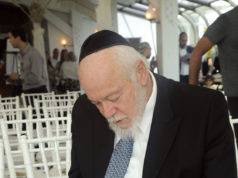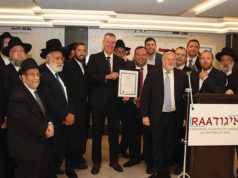 Luxembourg was founded in 963 CE by Count Siegfried. The first record of Jews living in the capital, the City of Luxembourg was in 1276. In the early 14th century, small numbers of Jewish immigrants from the adjacent area founded more settlements.
Luxembourg was founded in 963 CE by Count Siegfried. The first record of Jews living in the capital, the City of Luxembourg was in 1276. In the early 14th century, small numbers of Jewish immigrants from the adjacent area founded more settlements.
During the Black Death of 1349, Jews were massacred or expelled from the cities of Luxembourg and Echternach. The complete expulsion of the Jews occurred in 1391, but, by 1405, a few Jews had already moved back  into the region. In a 1478 uprising, Jewish homes and property were pillaged and destroyed, prompting the exodus of all but two Jewish families. Jews were again expelled in 1530. They did not reappear until the Napoleonic Era.
into the region. In a 1478 uprising, Jewish homes and property were pillaged and destroyed, prompting the exodus of all but two Jewish families. Jews were again expelled in 1530. They did not reappear until the Napoleonic Era.
In 1808, 75 Jews resided in Luxembourg. The country gained its independence in 1815, and the first synagogue was built in 1823. The country’s first Chief Rabbi, Samuel Hirsch, was appointed in 1843 and served until 1866. By 1880, there were 87 Jewish families in the city of Luxembourg, and 63 families spread throughout the duchy. This growth led to the creation of a new synagogue in 1894, and another in 1899.
By 1927, the Jewish community had grown to 1,171. By the 1930s, the population had reached nearly 4,000.
The Holocaust
Despite being neutral, Luxembourg was invaded by Germany on May 10, 1940. The Nazis were met with little resistance and were aided by local Volksdeutsche, ethnic Germans. At this time, more than 1,000 of the country’s 4,000 Jews escaped to France and Portugal.
On August 2, 1940, a Nazi civil government under Gauleiter Gustav Simon was set in place. A month later, the Nuremberg Laws were introduced to Luxembourg. On September 5, 355 businesses were taken from the Jews and given to Aryans. On September 13, the Gestapo announced that all Jews must leave the country or face deportation on the following Yom Kippur. The only way for the Jews to survive Hitler’s regime was to flee. Between August 8, 1940, and May 26, 1941, 700 Jews fled overseas, including Rabbi Serebrenik. In a secret operation, 1,000 Jews were evacuated to the unoccupied zone of France.
Restrictions were placed on the remaining Jews, including the requirement in September 1941 that all Jews wear a badge with a yellow star with the word “Jude” on it. The Jewish community was then interned by the German authorities in the Fuenfbrunnen transit camp in Northern Luxembourg. Of these Jews, 127 managed to emigrate in January 1942. By October 15, when the Germans stopped allowing Jews to leave, more than 2,500 had left the country, mostly for France. However, most of these refugees were later deported from France to concentration camps in Poland.
A small number of Christian Luxembourgers helped save Jews during the Holocaust. Victor Bodson, the former Justice Minister and Chairman of the Luxembourg House of Representatives, risked his life to smuggle 100 Jews out of the country through organized escape routes.
The Allies liberated Luxembourg on September 9, 1944. Only 1,555 of the 4,000 Jews who had lived in the country survived. The Nazis murdered 1,945, a third of whom died in camps after being deported from Luxembourg, and the rest in the country itself or in the occupied countries to which they fled.
After the Holocaust, approximately 1,500 Jews returned to Luxembourg, most of whom were merchants who rebuilt their prewar businesses. The government financially supported the reconstruction of the Jewish community, and helped build a new synagogue in 1953 to replace the one destroyed in 1943. In Esch-sur-Alzette, a community of 40 families was established, and a new synagogue was built there as well.
Contemporary Luxembourg
According to the official census, roughly 600 Jews live in Luxembourg today, although that number may not be accurate. Members of the community believe there are twice as much. About 80% of Luxembourg’s Jews live in Luxembourg City, and there is a much smaller community in the nearby town of Esch-sur-Alzette. The Jewish population is made up of Jews who returned to the country after the Holocaust, along with some recent immigrants.
Until recently, the Jewish community in Luxembourg had kept a low profile. Today, the community has begun to demand compensation for losses suffered during the Holocaust, and has begun to raise awareness of Luxembourg’s unique history during the war. In 2002, the country set up a commission to look into the fate of material losses during the war. There is one kosher grocery store, Boulangerie Philip, which serves approximately 30 families who observe kashrut. Services at the main synagogue follow modern Orthodox ritual, and are conducted in French and Hebrew by Moroccan-born Joseph Sayagh, believed to be the first Sephardic rabbi in Luxembourg’s history.



